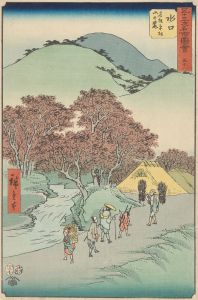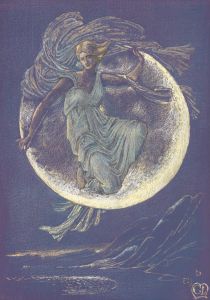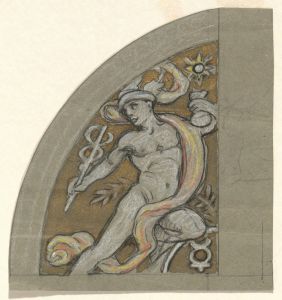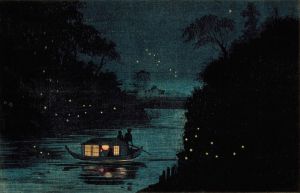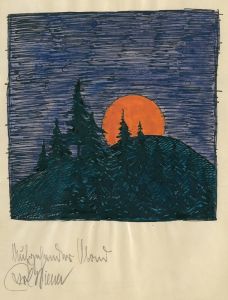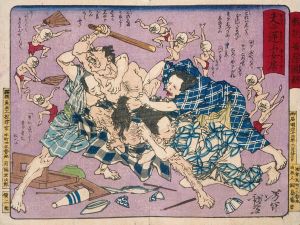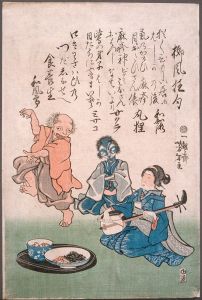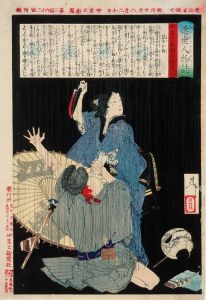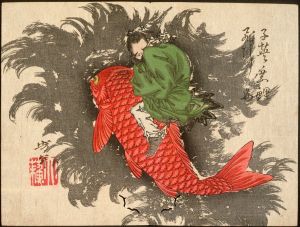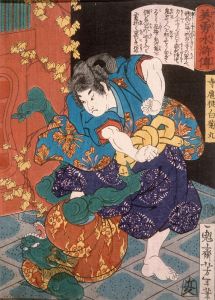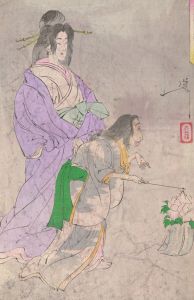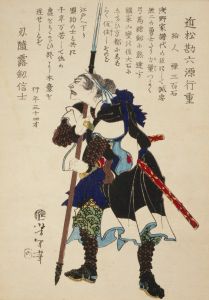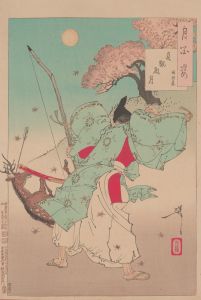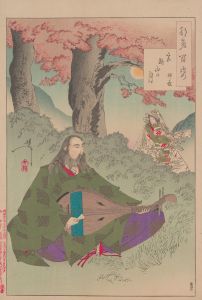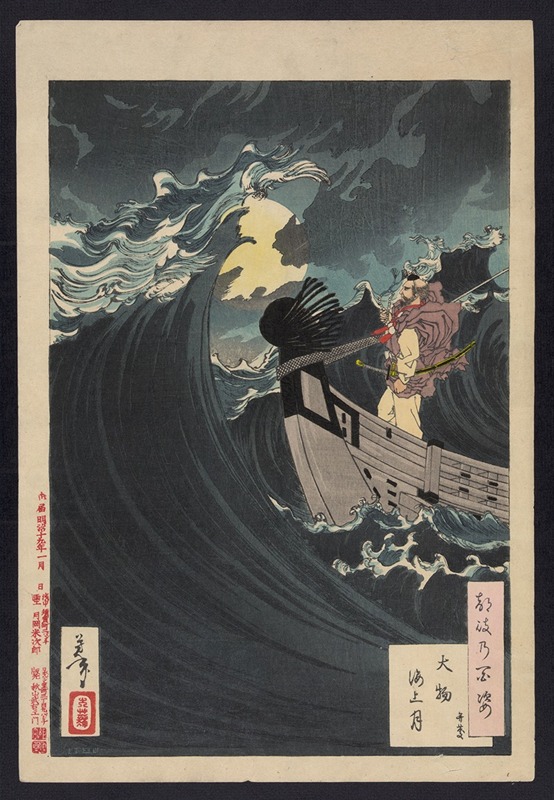
Daimotsu kaijō no tsuki
A hand-painted replica of Tsukioka Yoshitoshi’s masterpiece Daimotsu kaijō no tsuki, meticulously crafted by professional artists to capture the true essence of the original. Each piece is created with museum-quality canvas and rare mineral pigments, carefully painted by experienced artists with delicate brushstrokes and rich, layered colors to perfectly recreate the texture of the original artwork. Unlike machine-printed reproductions, this hand-painted version brings the painting to life, infused with the artist’s emotions and skill in every stroke. Whether for personal collection or home decoration, it instantly elevates the artistic atmosphere of any space.
"Daimotsu kaijō no tsuki" (The Moon at Daimotsu Bay) is a woodblock print by the renowned Japanese artist Tsukioka Yoshitoshi, created in 1886. Yoshitoshi, a master of the ukiyo-e genre, is celebrated for his innovative approach to traditional Japanese woodblock printing, particularly during the Meiji era. This period was marked by significant cultural and social changes in Japan, as the country opened up to Western influences after centuries of isolation.
The print is part of Yoshitoshi's acclaimed series "One Hundred Aspects of the Moon" (Tsuki hyakushi), which consists of 100 woodblock prints, each depicting a scene inspired by Japanese and Chinese history, literature, or folklore, with the moon as a central motif. This series is considered one of Yoshitoshi's masterpieces, showcasing his exceptional skill in composition, color, and storytelling.
"Daimotsu kaijō no tsuki" illustrates a dramatic scene from Japanese history involving the legendary warrior Minamoto no Yoshitsune. Yoshitsune was a prominent military commander during the late Heian and early Kamakura periods, known for his role in the Genpei War, which led to the establishment of the Kamakura shogunate. The print captures a moment from the tale of Yoshitsune's escape from his enemies after the war.
According to legend, Yoshitsune, accompanied by his loyal retainer Benkei and a small group of followers, was fleeing from the forces of his half-brother, Minamoto no Yoritomo, who saw him as a threat to his power. As Yoshitsune's ship sailed across Daimotsu Bay, it was beset by a violent storm, believed to have been conjured by the vengeful spirits of the Taira clan, whom Yoshitsune had defeated in battle. In the print, Yoshitsune is depicted standing resolutely on the deck of his ship, gazing at the moon, which symbolizes hope and guidance amidst the chaos of the storm.
Yoshitoshi's use of color and composition in this print is particularly noteworthy. The swirling waves and dark clouds create a sense of movement and tension, while the serene moon casts a calming light over the scene. This contrast highlights Yoshitsune's bravery and determination in the face of adversity.
"Daimotsu kaijō no tsuki" exemplifies Yoshitoshi's ability to blend traditional Japanese artistic techniques with a modern sensibility, capturing the imagination of audiences both in Japan and abroad. His work remains highly regarded for its emotional depth and technical excellence, and "One Hundred Aspects of the Moon" continues to be celebrated as a significant contribution to the art of ukiyo-e.





